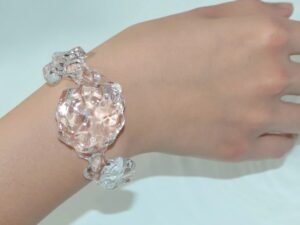- FDM 3D Printed Yellow PLA Door Arm Rest Switch Panel Clip
- FDM 3D Printed Red PLA Box with Holes and Slots
Material Resin
Quantity 2 pcs
Price Range $1-100
Lead Time 3 workdays
Gallery
About Project
Are you looking for a way to make your awards stand out from the crowd? Do you want to impress your recipients with a unique and durable material that can withstand high temperatures? If so, you might be interested in SLA 3D Printed 150Ōäā High-temp Clear Resin Medals from FacFox.
FacFox offers UnionTech Therm 1, a high-temperature resistant clear resin that can withstand up to 150Ōäā without deformation or discoloration. This resin is perfect for making medals that can endure harsh environments and exposure to heat. The resin has a transparent and reddish appearance, which gives the medals a striking and elegant look. Depending on the thickness of the model, the resin can also show different shades of orange.
FacFox recently made two thin medals with UnionTech Therm 1 for a client who wanted to reward their employees for their outstanding performance. The medals have a diameter of 60 mm and a thickness of 2 mm. They feature a truck design and the letters ŌĆ£FACFOXŌĆØ on one side, and the words ŌĆ£EXCELLENCE AWARDŌĆØ on the other side. The truck and letters are clearly printed out, showing the high level of detail that SLA 3D Printing can achieve. The medals have a glossy finish and an orange tint, which makes them stand out from the background.
If you are interested in ordering SLA 3D Printed 150Ōäā High-temp Clear Resin Medals from FacFox, you can visit their website and upload your design. FacFox will provide you with a quote and a preview of your model before printing. You can also select from various options such as size, quantity, color, and post-processing. FacFox guarantees fast delivery, high quality, and competitive prices.
DonŌĆÖt miss this opportunity to create amazing awards with SLA 3D Printed 150Ōäā High-temp Clear Resin Medals from FacFox. Order yours today and see the difference for yourself!
Solution
- Step 1: A 3D model of the medal was designed using CAD or other software, and exported in a 3D printable file format (STL or OBJ) .
- Step 2: The 3D model was imported into a 3D slicer software, which converted it into a series of thin layers and generated a set of instructions for the SLA 3D printer.
- Step 3: The SLA 3D printer was set up with a resin tray filled with UnionTech Therm 1, a high-temperature resistant clear resin that can withstand up to 150Ōäā without deformation or discoloration.
- Step 4: The SLA 3D printer used a UV laser to selectively cure the resin in the tray, solidifying one layer at a time on a mobile platform that moved up or down along the Z axis.
- Step 5: The printer repeated this process until the entire medal was built, with each layer adhering to the previous one.
- Step 6: The 3D printed medal was removed from the platform and washed with isopropyl alcohol (IPA) to remove any excess resin.
- Step 7: The medal was cured in a UV chamber or under sunlight to enhance its mechanical properties and appearance.
- Step 8: It was optionally sanded, polished, and coated with a clear varnish to improve its surface finish and durability.









